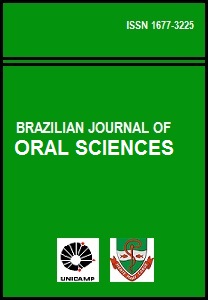Abstract
Maxillofacial defects caused by cancer treatment are a huge problem, affecting the quality of life of patients. Some of these deformities are minimized using facial epistheses, which needs some additional retenion devices, like glasses or skin adhesives. The use of extraoral fixtures as bone anchorage was introduced many years ago and since then many patients were rehabilitated with better results. Nevertheless, in many cases due to poor bone conditions (i.e. irradiated bone) the success rate of implants are not so good, causing difficulties to rehabilitate the cases. One possible cause of fixture failure could be the poor primary stability achieved in some cases, due to the small dimensions of the fixtures causing a few bone contact with the surface of the implant. Nowadays many researches are being done related to the surface of the fixture, searching for a better primary stability and for a increase of bone contact. Ordinary extraoral implants usually possess a machined surface, until now there is no published report about surface modifications in this kind of implant. This paper presents a new porous surfaced Brazilian extraoral implant (MasterExtraâ, Conexão, Sistema de Próteses, São Paulo, Brazil) that can provide optimal facial rehabilitation due to enhanced bone-to-implant contact and greater long-term stability. Two case reports are described to elucidate its use.References
Worthington PH, Bränemark PI. Advanced osseointegration surgery: applications in the maxillofacial region. Chicago: Quintessence; 1992.
Tjellström A. Osseointegrated systems and their applications in the head and neck. Adv Otolaryngol Head Neck Surg 1989; 3: 39-70.
Suzuki K, Aoki K, Ohya K. Effects of surface roughness of titanium implants on bone remodeling activity of femur in rabbits. Bone 1997; 21: 507-14.
Heo SJ, Sennerby L, Odersjo M, Granstrom G, Tjellstrom A, Meredith N. Stability measurements of craniofacial implants by means of resonance frequency analysis. A clinical pilot study. J Laryngol Otol 1998; 112: 537-42.
Rankin M, Borah GL. Perceived functional impact of abnormal facial appearance. Plast Reconstr Surg 2003; 111: 2140-6.
Thompson A, Kent G. Adjusting to disfigurement: processes involved in dealing with being visibly different. Clin Psychol Rev 2001; 21: 663-82.
Arcuri MR, Rubenstein JT. Facial implants. Dent Clin North Am 1998; 42(1): 161-75.
Trulsson U, Engstrand P, Berggren U, Nannmark U, Branemark PI. Edentulousness and oral rehabilitation: experiences from the patients’ perspective. Eur J Oral Sci 2002; 110: 417-24.
Trisi P, Rao W, Rebaudi A. A histometric comparison of smooth and rough titanium implants in human low-density jawbone. Int J Oral Maxillofac Implants 1999; 14: 689-98.
Novaes AB Jr, Souza SL, de Oliveira PT, Souza AM. Histomorphometric analysis of the bone-implant contact obtained with 4 different implant surface treatments placed side by side in the dog mandible. Int J Oral Maxillofac Implants 2002; 17: 377-83.
The Brazilian Journal of Oral Sciences uses the Creative Commons license (CC), thus preserving the integrity of the articles in an open access environment.

